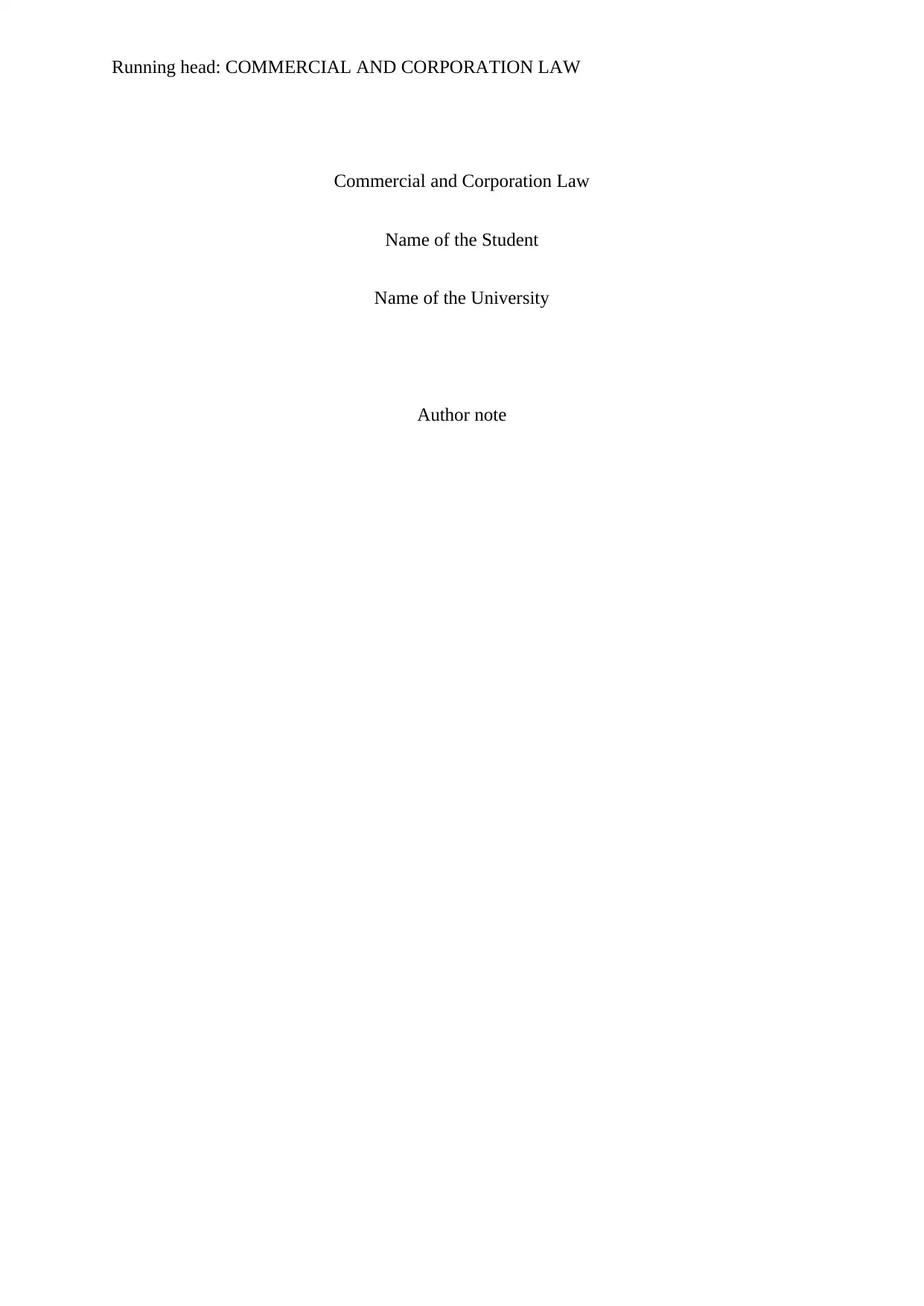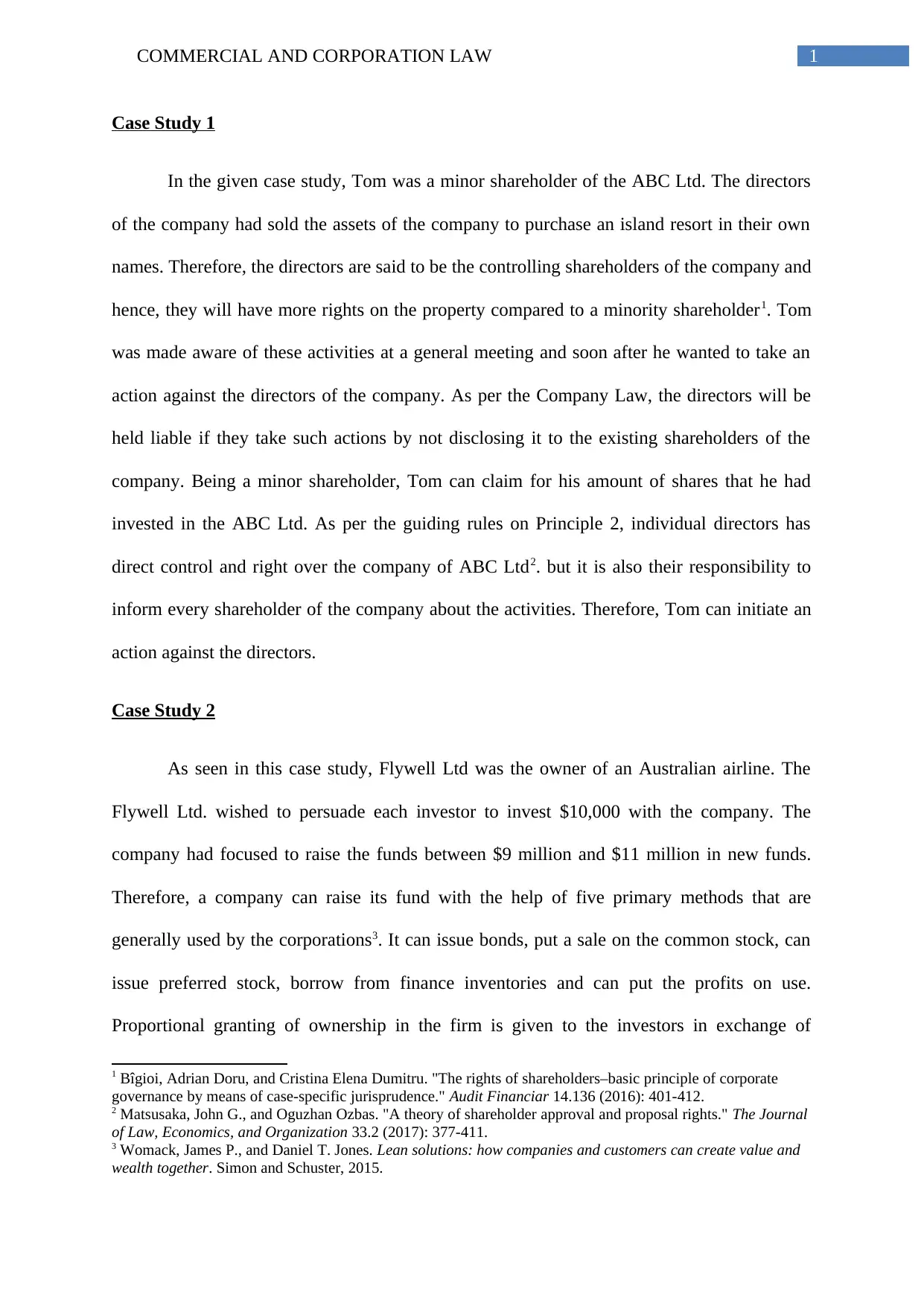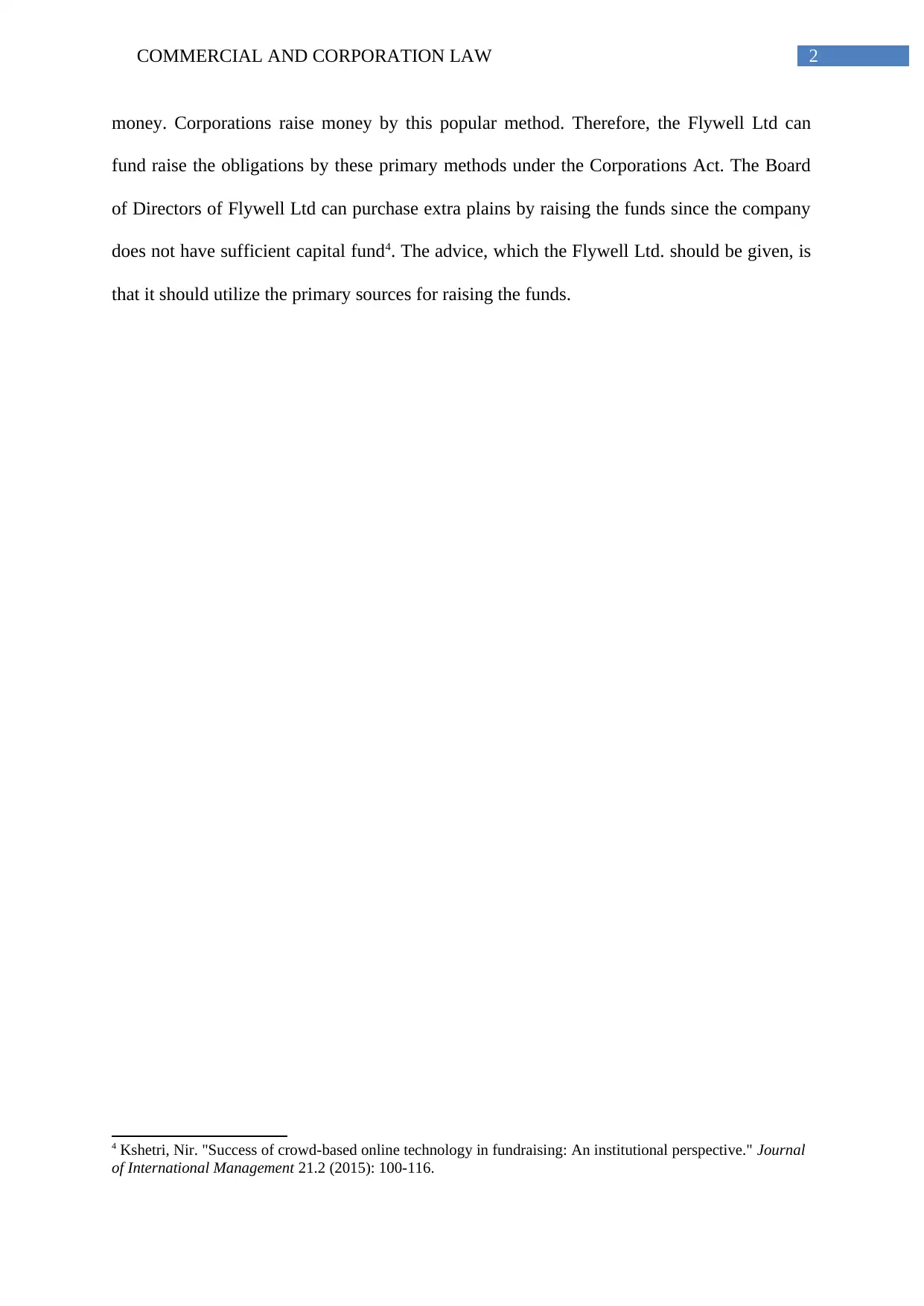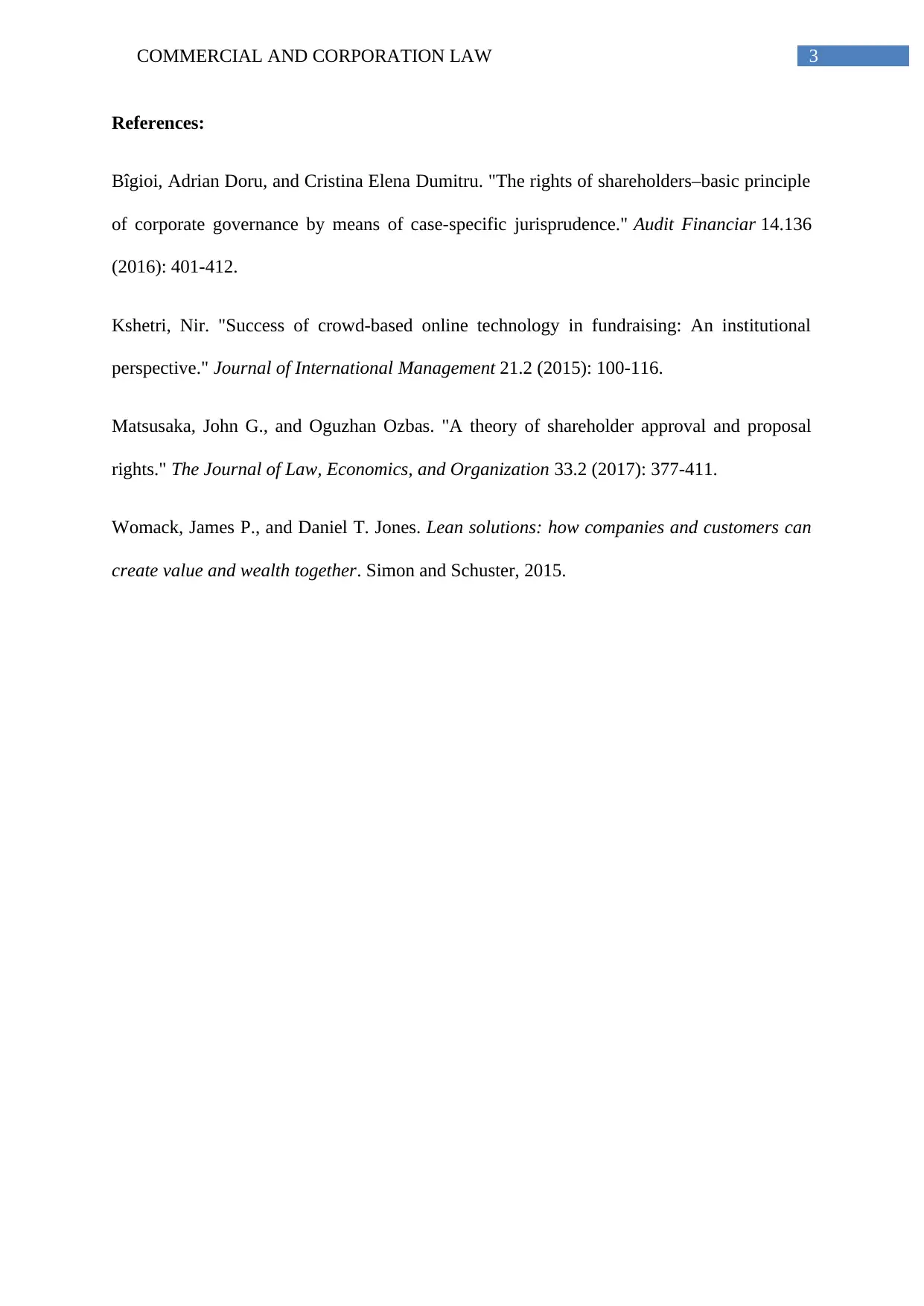University Case Study: Commercial and Corporation Law Assignment
VerifiedAdded on 2021/04/17
|4
|559
|27
Case Study
AI Summary
This document presents a case study analysis focusing on commercial and corporation law. The first case study examines the rights of a minority shareholder and the responsibilities of company directors, particularly concerning asset management and disclosure obligations. The analysis highlights the legal recourse available to the shareholder under company law. The second case study explores fundraising methods for a company, specifically an Australian airline. It discusses various approaches such as issuing bonds, selling common stock, and utilizing profits. The document provides recommendations for the company's fundraising strategies, referencing relevant legal principles and financial practices. The content aims to provide a comprehensive understanding of corporate governance and financial management within a legal framework.
1 out of 4











![[object Object]](/_next/static/media/star-bottom.7253800d.svg)